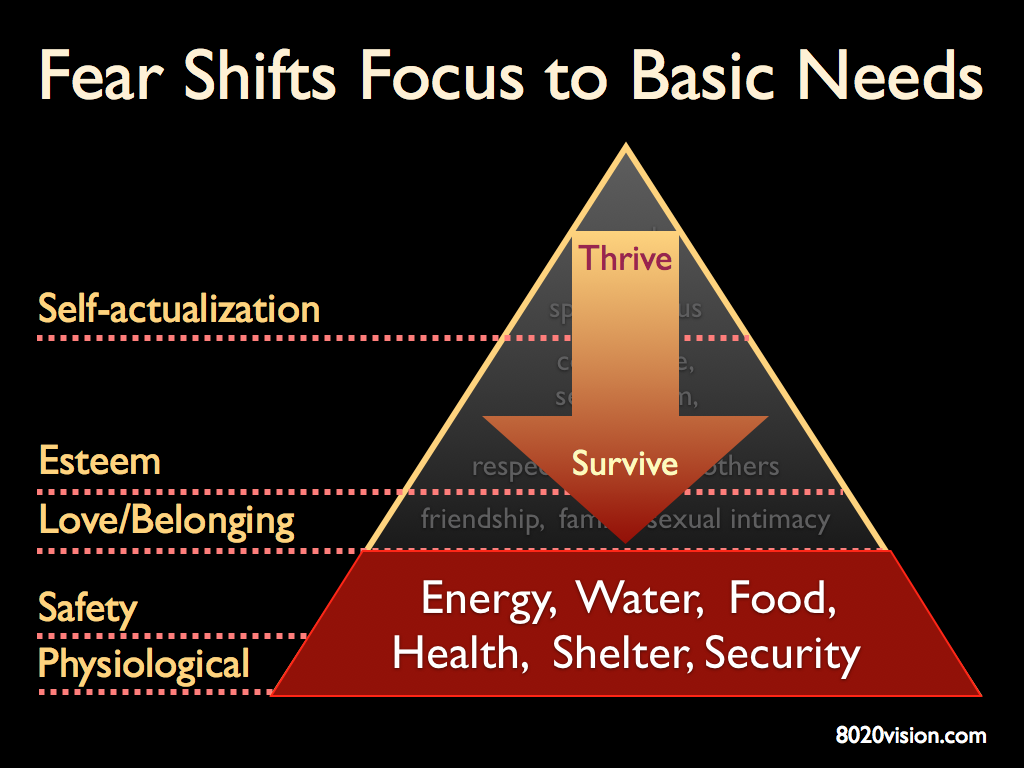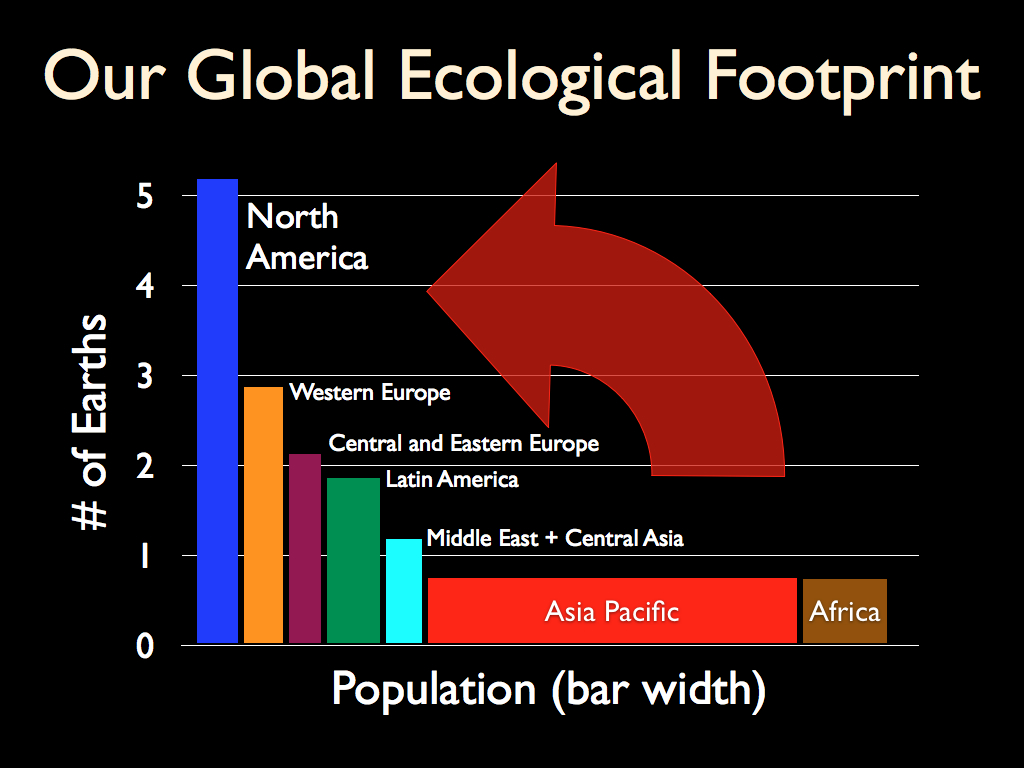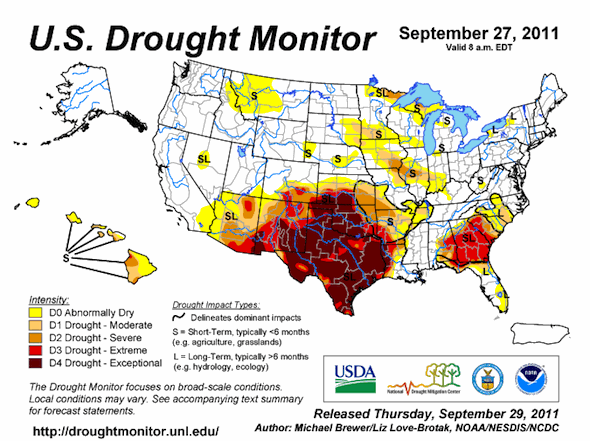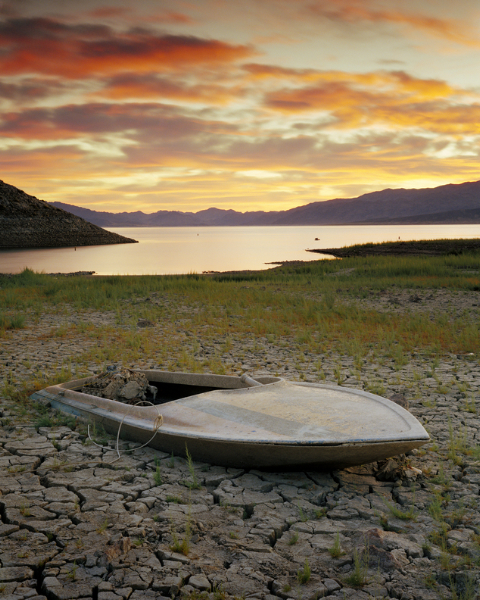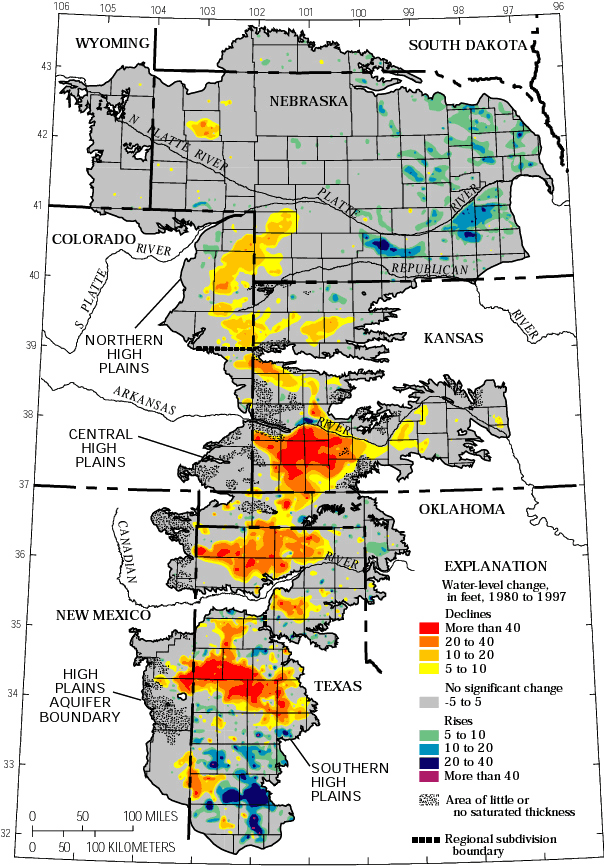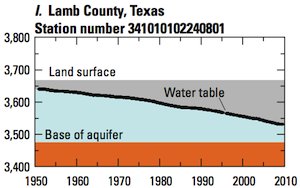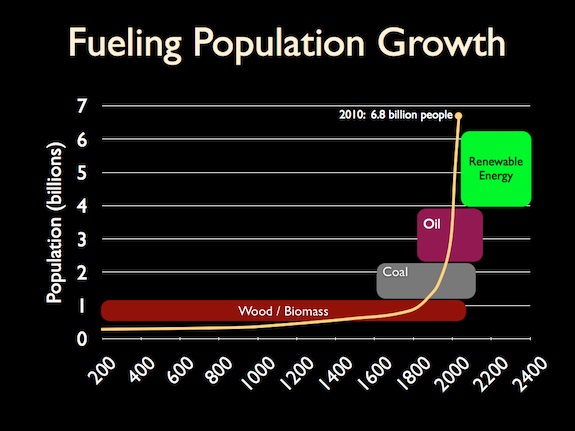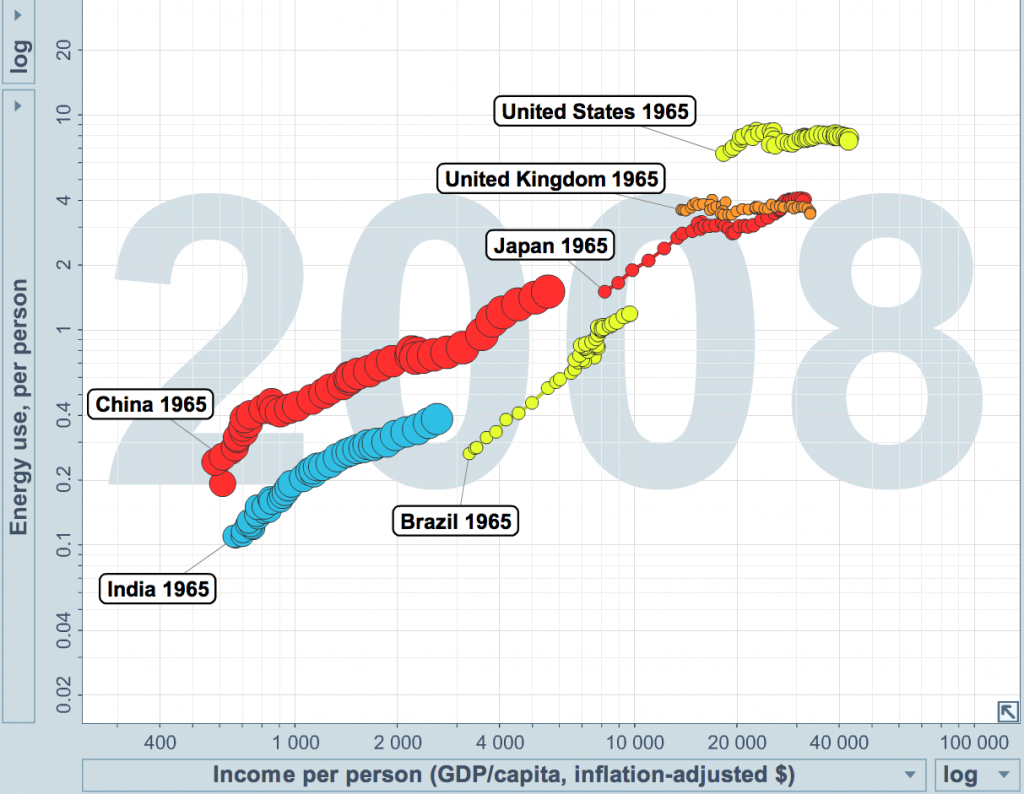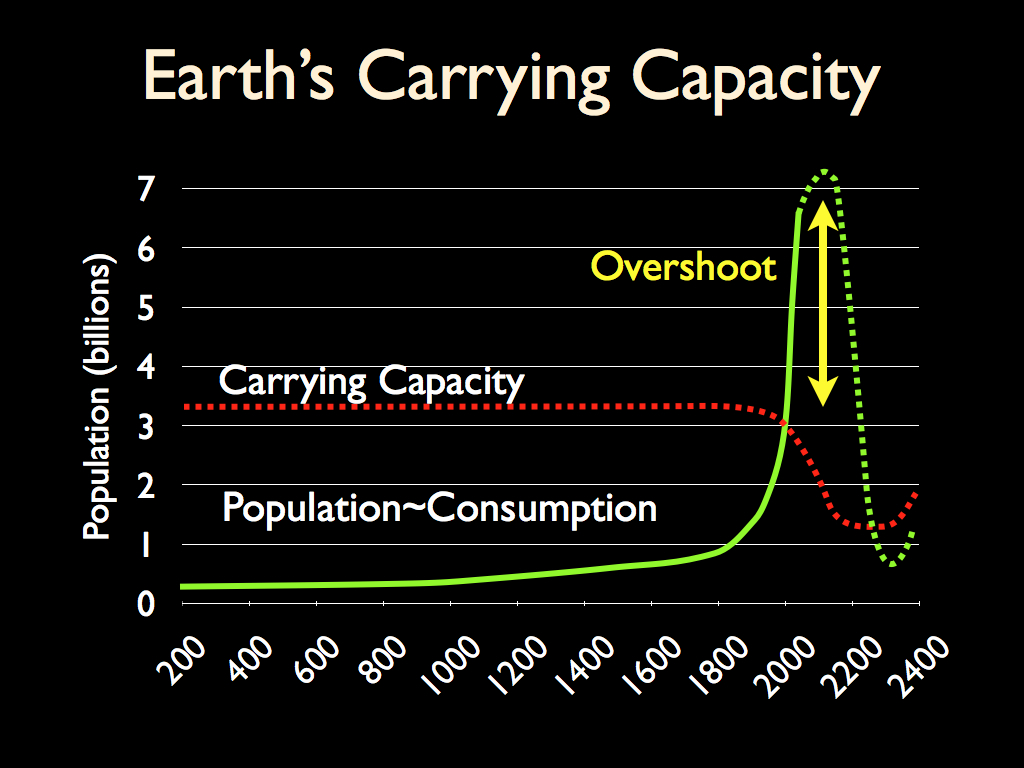Keywords: Julian Cribb, The Coming Famine, food, water, population, climate change
If you are a regular reader of this blog, you know that we track several core issues that we believe will have profound impact on us all – rich and poor, individuals, communities, business, and government. They are population, energy, water, food, climate change and healthcare. In a sense, food interrelates to all the other issues – it takes tremendous energy and water to produce our food, climate change will reduce food production, and food choices affect our health.
An excellent new book has just been published that clearly and concisely lays out the global food challenges unfolding around us and details what to do about it. The book is The Coming Famine: The Global Food Crisis and What We Can Do to Avoid It by Julian Cribb. The NY Times has an excellent excerpt and leads with this compelling quote:
Lo que separa la civilización de la anarquía son solo siete comidas.
(Civilization and anarchy are only seven meals apart.)—Spanish proverb
Food, water, shelter and security are the fundamental building blocks of a persons survival. When those basics are removed, even for a few days, a civilized population can move toward anarchy in a heartbeat.
Rather than highlight the NY Times excerpt, I think it is worth looking at the solid concise description Cribb provides, of the main drivers challenging the supply and demand sides of food production. If you read nothing else in this book, read this and remember it as you try to make sense of the news stories realted to food that will become more common as the crisis deepens.
Excerpt of The Coming Famine by Julian Cribb
To see where the answers may lie, we need to explore each of the main drivers. On the demand side the chief drivers are:
Population. Although the rate of growth in human numbers is slowing, the present upward trend of 1.5 percent (one hundred million more people) per year points to a population of around 9.2 billion in 2050 — 3 billion more than in 2000. Most of this expansion will take place in poorer countries and in tropical/subtropical regions. In countries where birth rates are falling, governments are bribing their citizens with subsidies to have more babies in an effort to address the age imbalance.
Consumer demand. The first thing people do as they climb out of poverty is to improve their diet. Demand for protein foods such as meat, milk, fish, and eggs from consumers with better incomes, mainly in India and China but also in Southeast Asia and Latin America, is rising rapidly. This in turn requires vastly more grain to feed the animals and fish. Overfed rich societies continue to gain weight. The average citizen of Planet Earth eats one-fifth more calories than he or she did in the 1960s — a “food footprint” growing larger by the day.
Population and demand. This combination of population growth with expansion in consumer demand indicates a global requirement for food by 2050 that will be around 70–100 percent larger than it is today. Population and demand are together rising at about 2 percent a year, whereas food output is now increasing at only about 1 percent a year.
These demand-side factors could probably be satisfied by the world adopting tactics similar to those of the 1960s, when the Green Revolution in farming technology was launched, were it not for the many constraints on the supply side that are now emerging to hinder or prevent such a solution:
Water crisis. Put simply, civilization is running out of freshwater. Farmers presently use about 70 percent of the world’s readily available freshwater to grow food. However, increasingly megacities, with their huge thirst for water for use in homes, industry, and waste disposal, are competing with farmers for this finite resource and, by 2050, these uses could swallow half or more of the world’s available freshwater at a time when many rivers, lakes, and aquifers will be drying up. Unless major new sources or savings are found, farmers will have about half of the world’s currently available freshwater with which to grow twice the food.
Land scarcity. The world is running out of good farmland. A quarter of all land is now so degraded that it is scarcely capable of yielding food. At the same time, cities are sprawling, smothering the world’s most fertile soil in concrete and asphalt, while their occupants fan out in search of cheap land for recreation that diverts the best food-producing areas from agriculture. A third category of land is poisoned by toxic industrial pollution. Much former urban food production has now ceased. The emerging global dearth of good farmland represents another severe limit on increasing food production.
Nutrient losses. Civilization is hemorrhaging nutrients — substances essential to all life. Annual losses in soil erosion alone probably exceed all the nutrients applied as fertilizer worldwide. The world’s finite nutrient supplies may already have peaked. Half the fertilizer being used is wasted. In most societies, up to half the food produced is trashed or lost; so too are most of the nutrients in urban waste streams. The global nutrient cycle, which has sustained humanity throughout our history, has broken down.
Energy dilemma. Advanced farming depends entirely on fossil fuels, which are likely to become very scarce and costly within a generation. At present farmers have few alternative means of producing food other than to grow fuel on their farms — which will reduce food output by 10–20 percent. Many farmers respond to higher costs simply by using less fertilizer or fuel — and so cutting yields. Driven by high energy prices and concerns about climate change, the world is likely to burn around 400 million tonnes (441 million U.S. tons) of grain as biofuels by 2020 — the equivalent of the entire global rice harvest.
Oceans. Marine scientists have warned that ocean fish catches could collapse by the 2040s due to overexploitation of wild stocks. Coral reefs — whose fish help feed about five hundred million people — face decimation under global warming. The world’s oceans are slowly acidifying as carbon dioxide from the burning of fossil fuels dissolves out of the atmosphere, threatening ocean food chains. Fish farms are struggling with pollution and sediment runoff from the land. The inability of the fish sector to meet its share of a doubling in world food demand will throw a heavier burden onto land-based meat industries.
Technology. For three de cades the main engine of the modern food miracle, the international scientific research that boosted crop yields, has been neglected, leading to a decline in productivity gains. Farmers worldwide are heading into a major technology pothole, with less new knowledge available in the medium run to help them to increase output.
Climate. The climate is changing: up to half the planet may face regular drought by the end of the century. “Unnatural disasters” — storms, floods, droughts, and sea-level rise — are predicted to become more frequent and intense, with adventitious impacts on food security, refugee waves, and conflict.
Economics, politics, and trade. Trade barriers and farm subsidies continue to distort world markets, sending the wrong price signals to farmers and discouraging investment in agriculture and its science. The globalization of food has helped drive down prices received by farmers. Speculators have destabilized commodity markets, making it riskier for farmers to make production decisions. Some countries discourage or ban food exports and others tax them, adding to food insecurity. Others pay their farmers to grow fuel instead of food. A sprawling web of health, labor, and environmental regulation is limiting farmers’ freedom to farm.
The collapse in world economic conditions in late 2008 and 2009 has changed the prices of many things, including land, food, fuel, and fertilizer — but has not altered the fact that demand for food continues to grow while limits on its production multiply. Indeed, the economic crash exacerbated hunger among the world’s poor, and has not altered the fundamentals of climate change, water scarcity, population growth, land degradation, or nutrient or oil depletion.
As Cribb astutely points out, as developing nations become more affluent, they consume more protein, in the form of fish, meat, milk, eggs, etc.
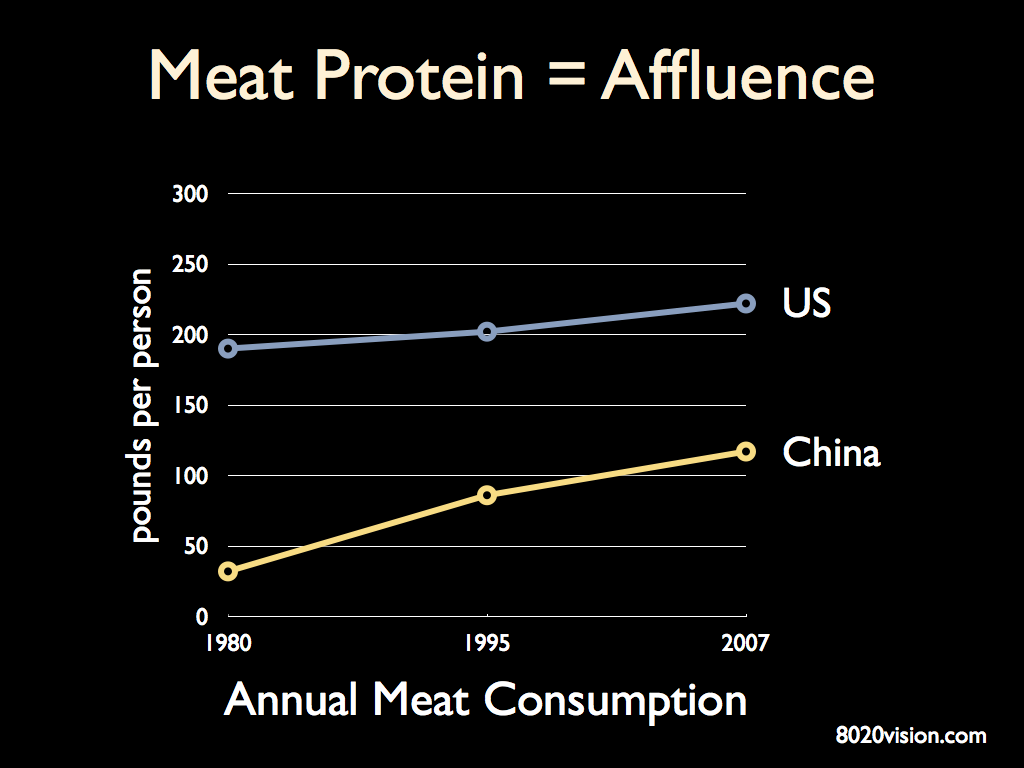
That protein is produced with grain, and it is an inefficient process:
- It takes 1,ooo tons of water to produce a ton of grain
- It takes about 15 pounds of grain to produce a pound of beef
- It takes about 5,200 gallons of water to produce a pound of beef
Thinking about the Butterfly Effect – the idea that a butterfly flapping its wings in one part of the world, changing patterns in the air, can cause a tornado in another part of the world – we can see that famine in one part of the world becomes a kind of super butterfly. All nations – rich and poor – will feel the impact.
Cripp summarizes the challenge and frames the solution:
To sum it all up, the challenge facing the world’s 1.8 billion women and men who grow our food is to double their output of food — using far less water, less land, less energy, and less fertilizer. They must accomplish this on low and uncertain returns, with less new technology available, amid more red tape, economic disincentives, and corrupted markets, and in the teeth of spreading drought. Achieving this will require something not far short of a miracle.
Yet humans have done it before and, resilient species that we are, we can do it again. This time, however, it won’t just be a problem for farmers, scientists, and policy makers. It will be a challenge involving every single one of us, in our daily lives, our habits, and our influence at the ballot box and at the supermarket.
It will be the greatest test of our global humanity and our wisdom we have yet faced.
